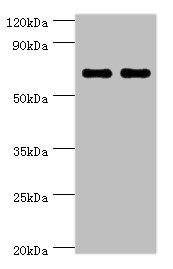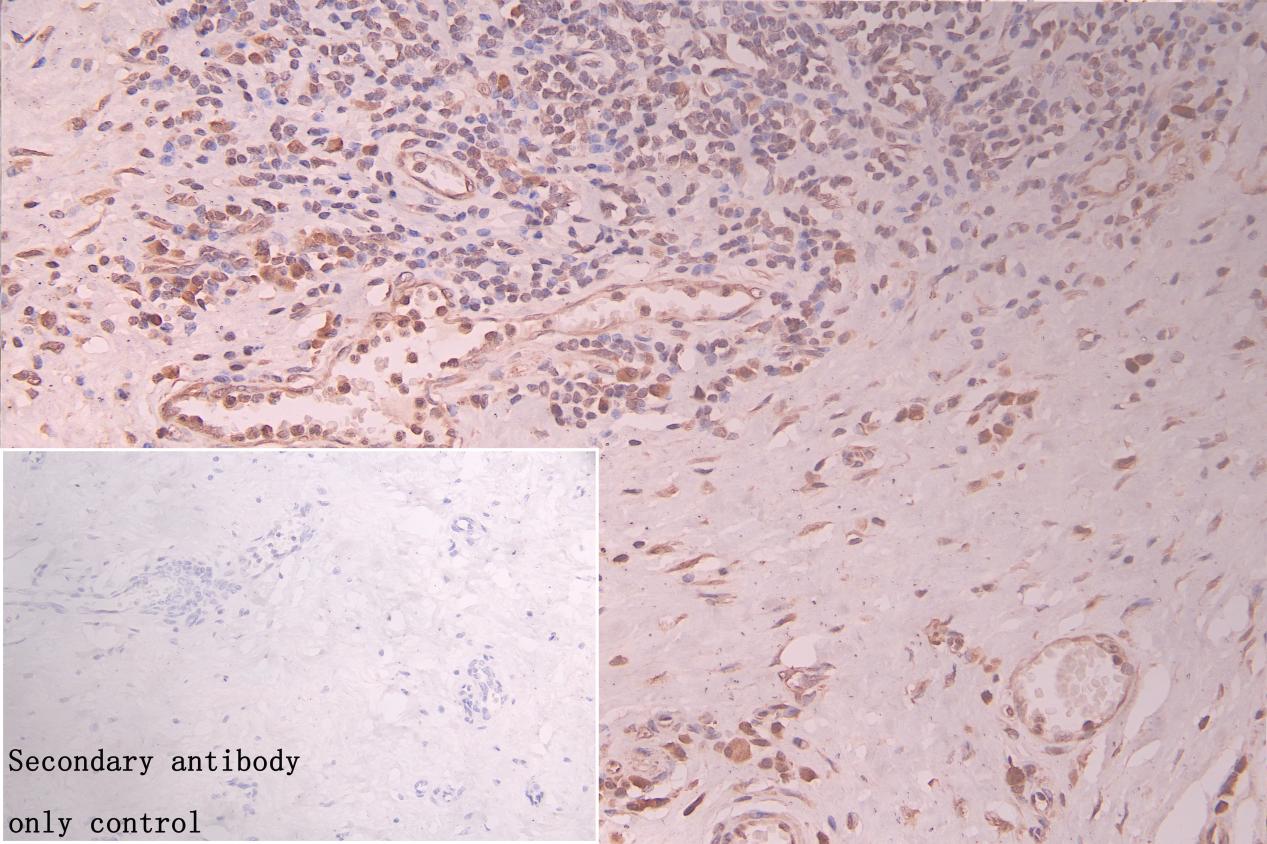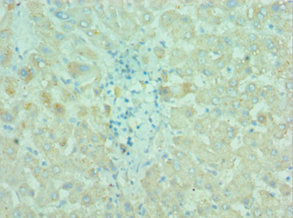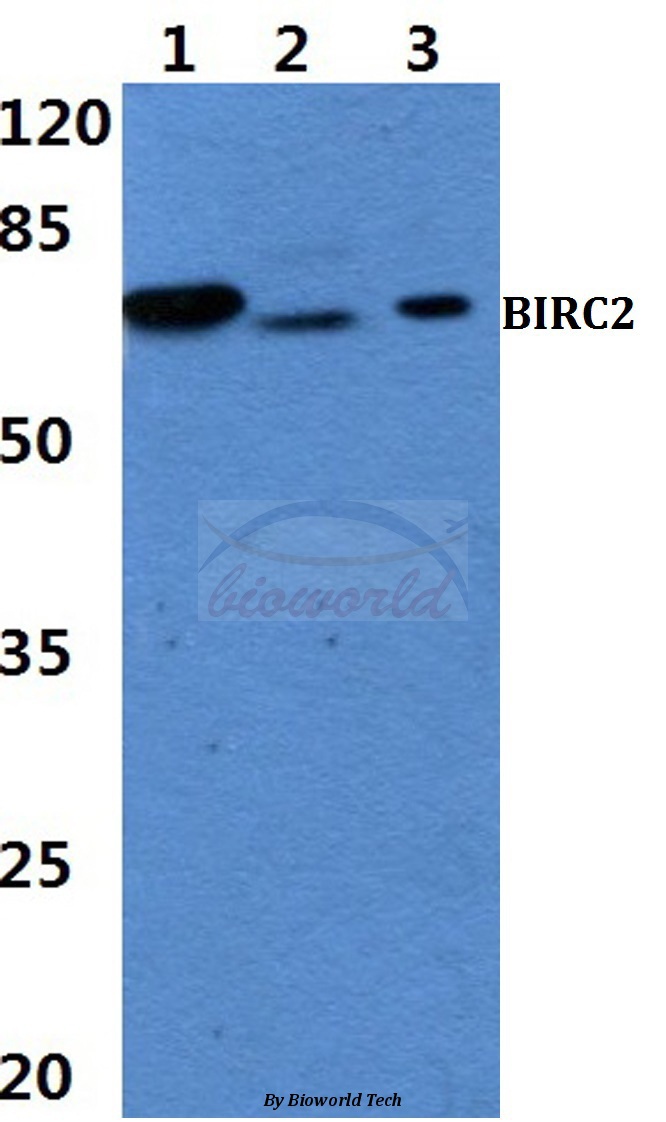
Western blot All lanes: BIRC2 antibody at 5microg/ml Lane 1: HepG2 whole cell lysate Lane 2: K562 whole cell lysate Secondary Goat polyclonal to rabbit IgG at 1/10000 dilution Predicted band size: 70, 65 kDa Observed band size: 70 kDa
BIRC2 Antibody
CSB-PA618777ESR1HU
ApplicationsWestern Blot, ELISA, ImmunoHistoChemistry
Product group Antibodies
ReactivityHuman
TargetBIRC2
Overview
- SupplierCusabio
- Product NameBIRC2 Antibody
- Delivery Days Customer20
- ApplicationsWestern Blot, ELISA, ImmunoHistoChemistry
- CertificationResearch Use Only
- ClonalityPolyclonal
- ConjugateUnconjugated
- Gene ID329
- Target nameBIRC2
- Target descriptionbaculoviral IAP repeat containing 2
- Target synonymsAPI1, HIAP2, Hiap-2, MIHB, RNF48, c-IAP1, cIAP1, baculoviral IAP repeat-containing protein 2, IAP homolog B, IAP-2, NFR2-TRAF signalling complex protein, RING finger protein 48, RING-type E3 ubiquitin transferase BIRC2, TNFR2-TRAF-signaling complex protein 2, apoptosis inhibitor 1, cellular inhibitor of apoptosis 1, inhibitor of apoptosis protein 2
- HostRabbit
- IsotypeIgG
- Protein IDQ13490
- Protein NameBaculoviral IAP repeat-containing protein 2
- Scientific DescriptionMulti-functional protein which regulates not only caspases and apoptosis, but also modulates inflammatory signaling and immunity, mitogenic kinase signaling, and cell proliferation, as well as cell invasion and metastasis. Acts as an E3 ubiquitin-protein ligase regulating NF-kappa-B signaling and regulates both canonical and non-canonical NF-kappa-B signaling by acting in opposite directions: acts as a positive regulator of the canonical pathway and suppresses constitutive activation of non-canonical NF-kappa-B signaling. The target proteins for its E3 ubiquitin-protein ligase activity include: RIPK1, RIPK2, RIPK3, RIPK4, CASP3, CASP7, CASP8, TRAF2, DIABLO/SMAC, MAP3K14/NIK, MAP3K5/ASK1, IKBKG/NEMO, IKBKE and MXD1/MAD1. Can also function as an E3 ubiquitin-protein ligase of the NEDD8 conjugation pathway, targeting effector caspases for neddylation and inactivation. Acts as an important regulator of innate immune signaling via regulation of Toll-like receptors (TLRs), Nodlike receptors (NLRs) and RIG-I like receptors (RLRs), collectively referred to as pattern recognition receptors (PRRs). Protects cells from spontaneous formation of the ripoptosome, a large multi-protein complex that has the capability to kill cancer cells in a caspase-dependent and caspase-independent manner. Suppresses ripoptosome formation by ubiquitinating RIPK1 and CASP8. Can stimulate the transcriptional activity of E2F1. Plays a role in the modulation of the cell cycle.
- ReactivityHuman
- Storage Instruction-20°C or -80°C
- UNSPSC41116161







